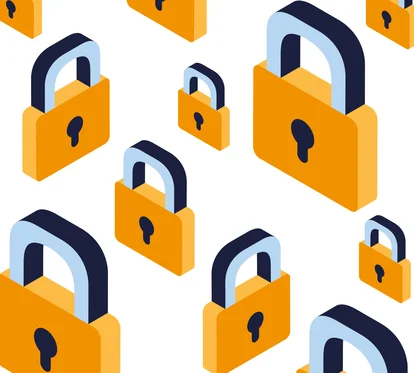Preventing yourself from becoming a victim of ransomware
No matter where a ransomware attack comes from, it's best to make sure the chances of success are as low as possible. Because when it's too late, you face the dilemma: Do I pay a ransom, or not? If you pay, you reinforce this form of crime. Moreover, there is no guarantee that you will get your files back or that they will not be leaked later. Criminals cannot be trusted, after all. Therefore, it is of utmost importance to protect your organisation from this type of cybercrime.
Fortunately, there are several preventive measures you can take as an organisation to avoid falling prey to a ransomware attack:
- Know what you're clicking on
It's obvious and yet it often goes wrong: be careful when opening email attachments or links from unknown senders. Ransomware is often spread via phishing emails that trick you into clicking on a malicious link or downloading an infected file.
Keep your software up-to-date and install security updates as soon as possible. This will prevent ransomware from exploiting vulnerabilities in your systems.
Use reliable antivirus software and a firewall to protect your devices from malware. An antivirus program can detect and remove malicious software such as ransomware.
Create regular backups of important files and store them in a secure location, such as on an external hard drive or in the cloud. This will allow you to recover your files in case they are encrypted.
- Encourage security awareness
Train your employees to be cyber-aware and to recognise and report suspicious emails or messages. Make clear agreements on how to deal with ransomware attacks and who to contact in case of an emergency.
- Incident response planning
Develop and implement a well-thought-out incident response plan. This plan should detail how the organisation should act in the event of a ransomware attack. Such a plan can help minimise response time and limit damage.
Implement comprehensive monitoring of network activity and logging to identify and track suspicious behavior. This allows early detection of an attack and a quick response.
- Have you become a victim? Report it to the police
Contact the police if you become a victim of a ransomware attack. Report it and seek advice on how to proceed. Never pay a ransom without first seeking legal advice.
Ransomware poses a serious cyber threat that can affect organisations of any size. And no single approach offers a 100% guarantee against an attack. So, it is important to be aware of this threat and continually improve your security.
A layered, proactive approach to cybersecurity is crucial to minimising the impact of a potential attack and reducing the attackers' chances of success. By following these tips, you can better arm yourself against these attacks and their harmful consequences.

